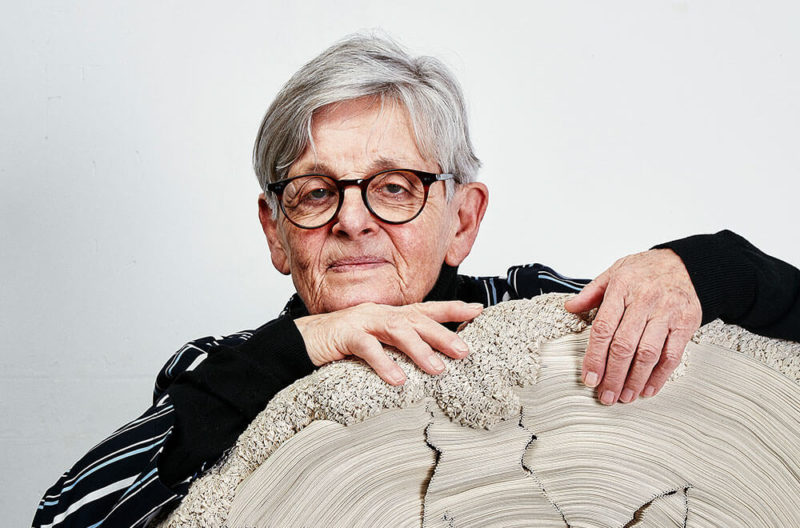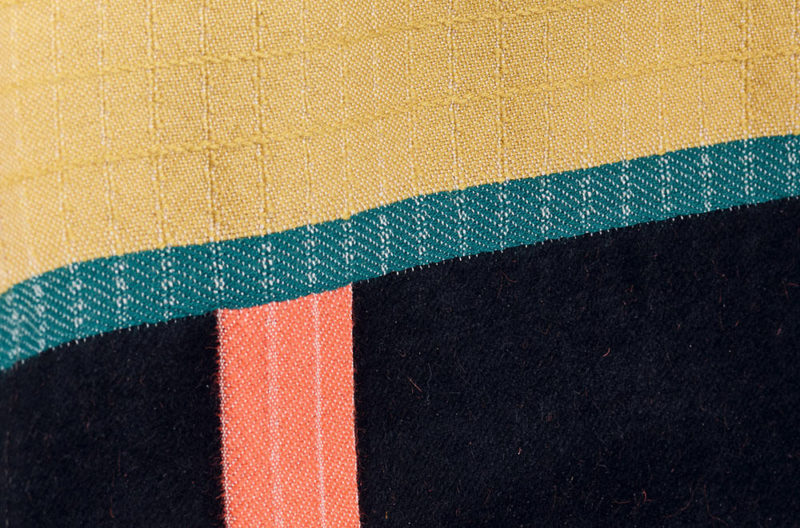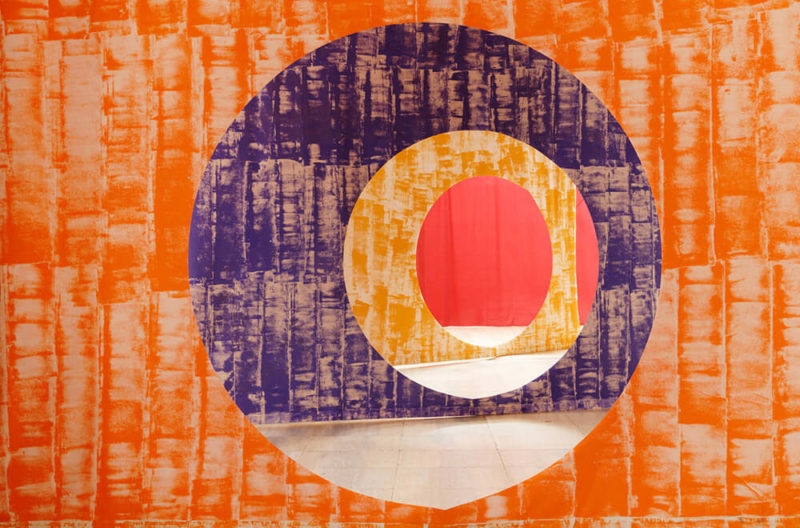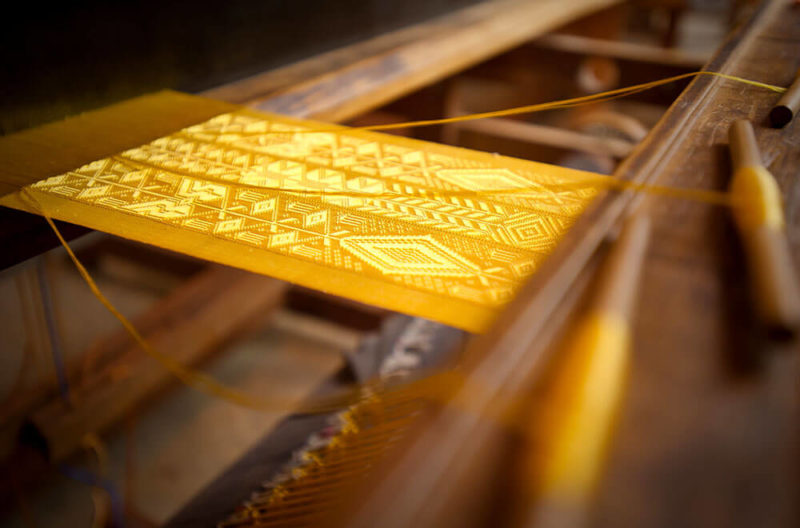Bea Bonafini
“I was trying to understand how a pictorial space of a painting could become all-embracing and give you that sense of comfort – so you would want to spend time with the work, rather than confront it at a distance.”
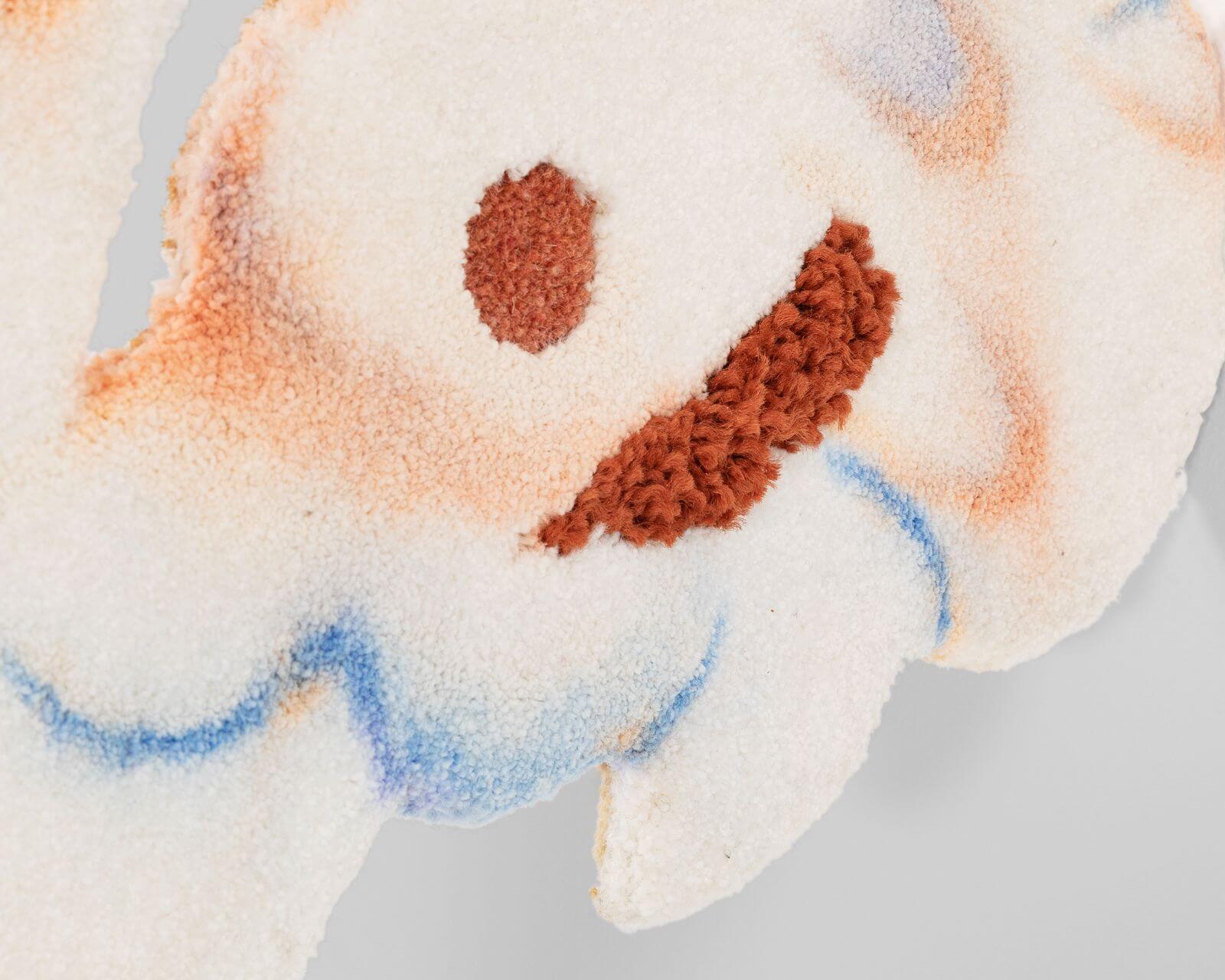
Bea Bonafini, ‘Tomb of the Bulls’, 2018 (detail)
COURTESY: Bea Bonafini & Carpenters Workshop Gallery
AS CARPENTERS WORKSHOP Gallery opens their survey show of young talent, ‘NEXTGEN | THE NEW GUARD‘ in Paris, The Design Edit interviews the artist Bea Bonafini.
Born in 1990, in Bonn, Germany, Bea Bonafini is an Italian artist living and working between Rome, London and Paris. She has most recently concluded an Abbey Scholarship with the British School at Rome (BSR), Italy, 2019-2021. In 2016 she graduated from the Royal College Of Art, London, with an MA in Painting (Distinction), and in 2104 she graduated from the Slade School of Fine Art, with a BA in Fine Art, (First Class Honours). Opening soon is a show in Palermo at the Palazzo Abatellis, while a solo show of new work will open at Bosse & Baum in London at the end of September.
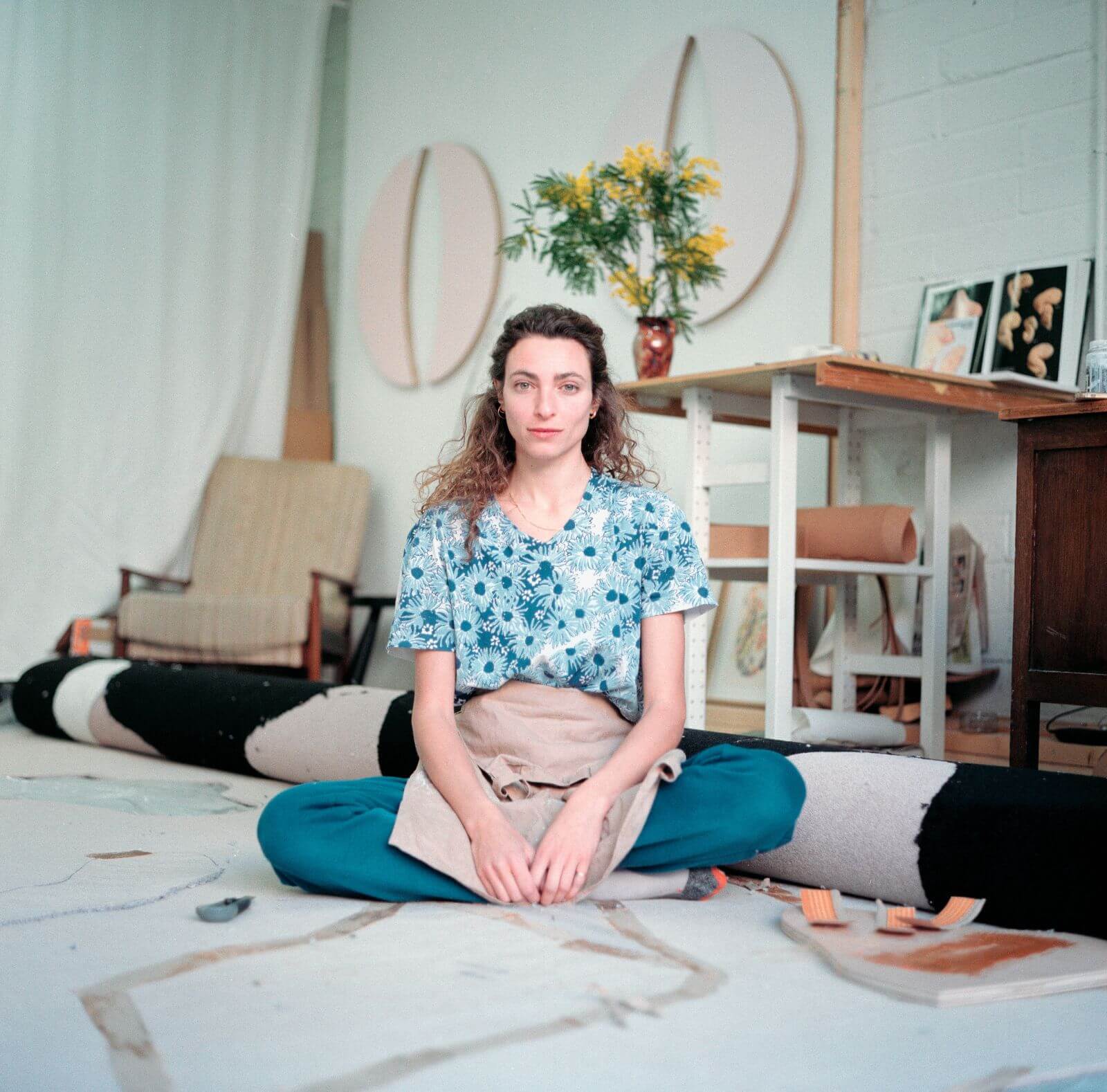
Bea Bonafini
COURTESY: Bea Bonafini & Carpenters Workshop Gallery / PHOTOGRAPH: Teddy Freeman
The Design Edit (TDE): What have been your formative influences as an artist?
Bea Bonafini: I grew up in an Italian household, but across different countries. I was born in Germany, but lived in Australia, Ireland, Slovakia and Italy as well. When I turned eighteen I came to London. Being here was formative: there were so many young people like me wanting to be artists, and I really felt this crushing pressure to figure out my own identity, in order for my work to be genuine.
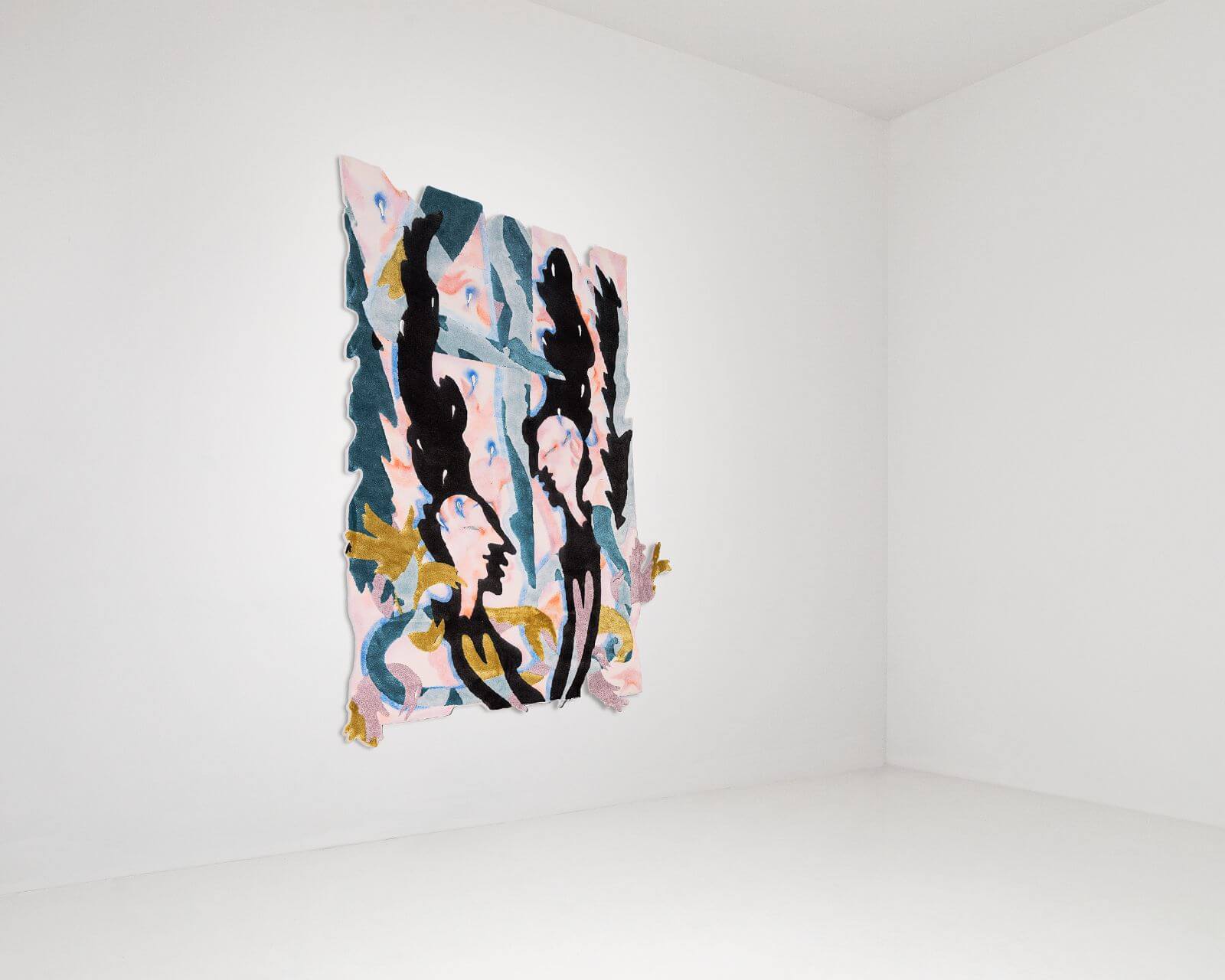
Bea Bonafini, ‘4’, 2019
COURTESY: Bea Bonafini & Carpenters Workshop Gallery
TDE: So your background is as a painter?
Bea Bonafini: In the UK art school system, you can choose your department. It is really a sense of you having to belong to a certain tribe, but then you can react against it. I always wanted to place myself within a painting department in order to react to the painting world.
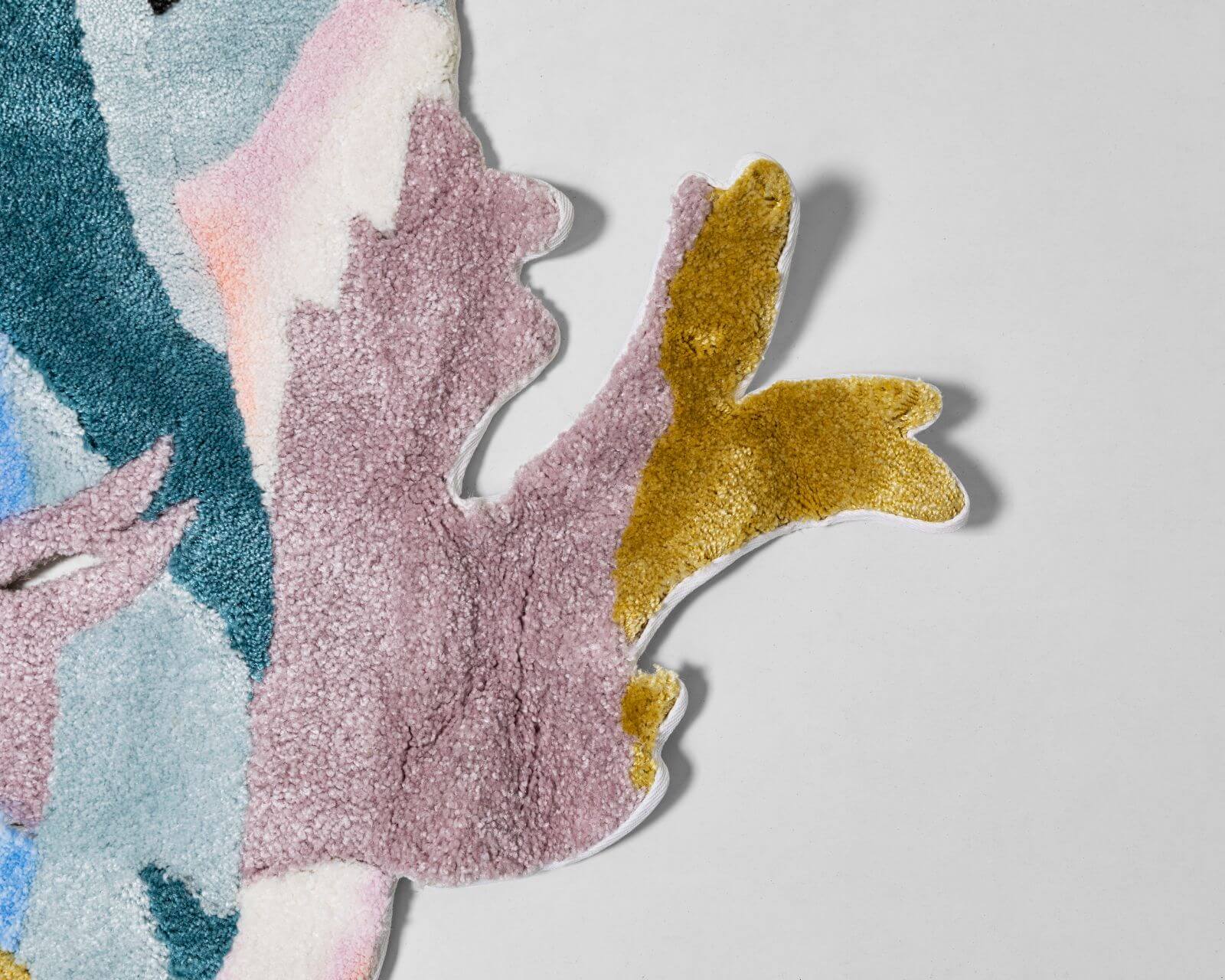
Bea Bonafini, ‘4’, 2019 (detail)
COURTESY: Bea Bonafini & Carpenters Workshop Gallery
TDE: When you were at the Royal College of Art, what was your primary modem of expression?
Bea Bonafini: It was very interdisciplinary – I had performance, food and textiles, I had machines from the fashion department, I was getting into ceramics, I was painting on leather, I was making sculptures out of salty bread dough and staining them. I was all over the place but in the best possible way, because I was trying to figure out how to manipulate materials in different ways and not narrow myself down too soon.
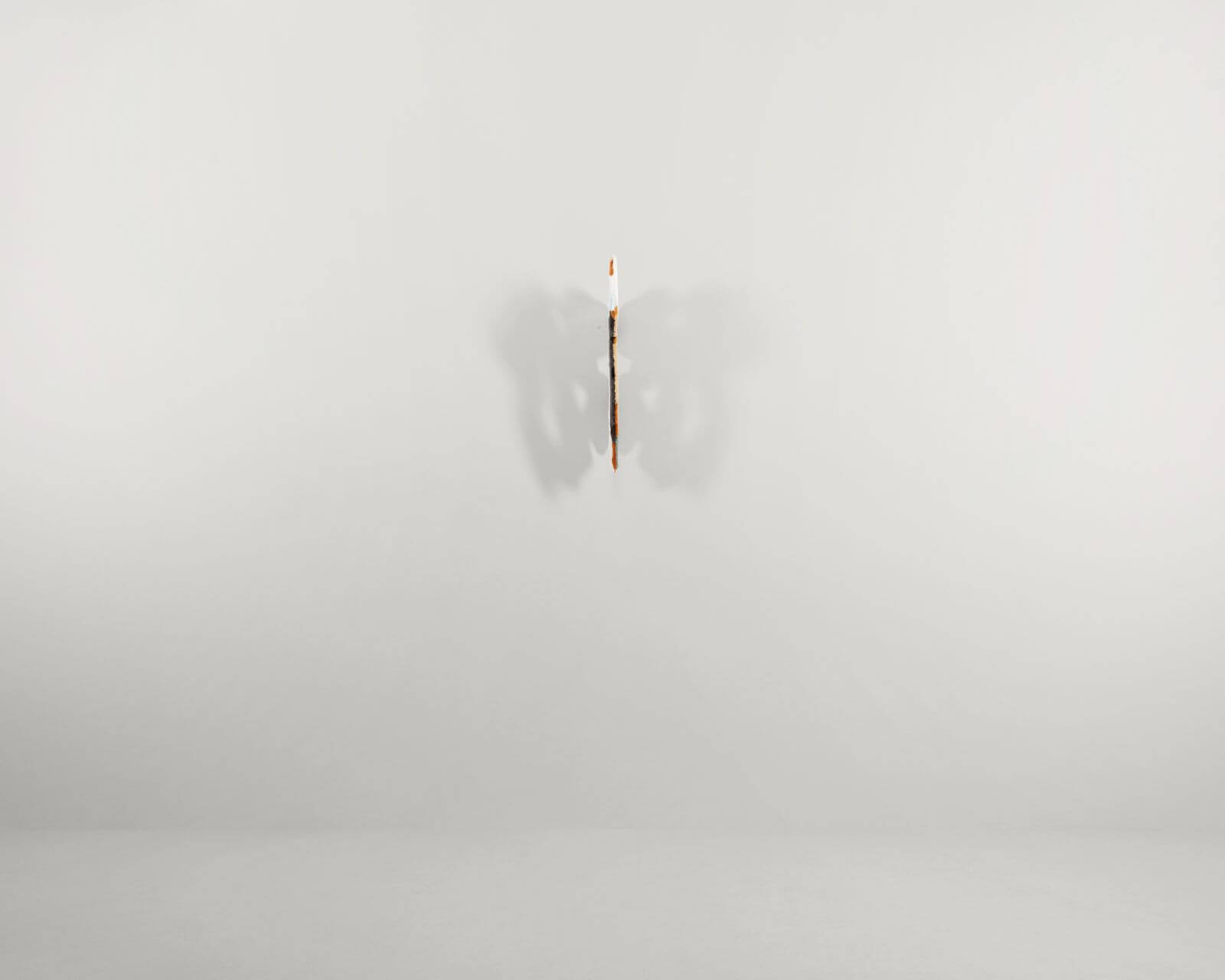
Bea Bonafini, ‘Tomb of the Bullesses’, 2018
COURTESY: Bea Bonafini & Carpenters Workshop Gallery
TDE: What was your graduation show?
Bea Bonafini: I think I was the only person ever to ask for the café space. I wanted this confusion between the functional and the dysfunctional, the curation of a space that then gets used by people who are sitting there having conversations with the work, on the work.
There was a sound piece of some recordings I had taken in Georgia of these big banquets, so people could sit around this sculptural table I had made and listen to people chanting, eating and having conversations in a foreign language. And I had built this huge bookcase which contained lots of different objects arranged on it as if it was almost a shop, or a cabinet of curiosities.
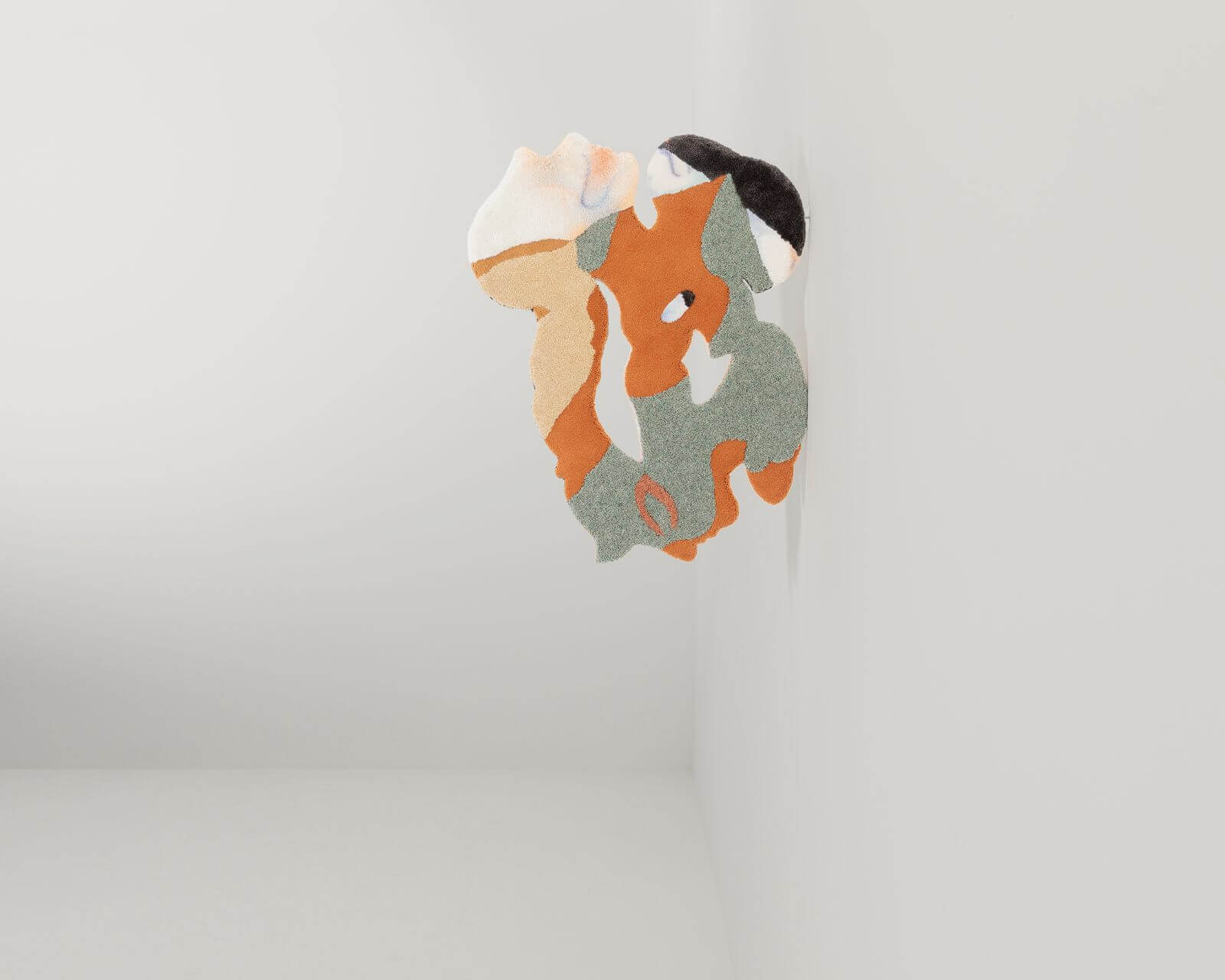
Bea Bonafini, ‘Tomb of the Bullesses’, 2018
COURTESY: Bea Bonafini & Carpenters Workshop Gallery
I was trying to blur the boundaries between objects and disciplines and it made people feel quite uncomfortable, as they had to sit on artworks and they had to be careful as they moved around the café space, thinking “Oh this is an artwork, but am I allowed to use it, am I allowed to sit on it?” Then if they saw somebody using the pieces they would feel authorised to interact with them. These were the things I was playing with.
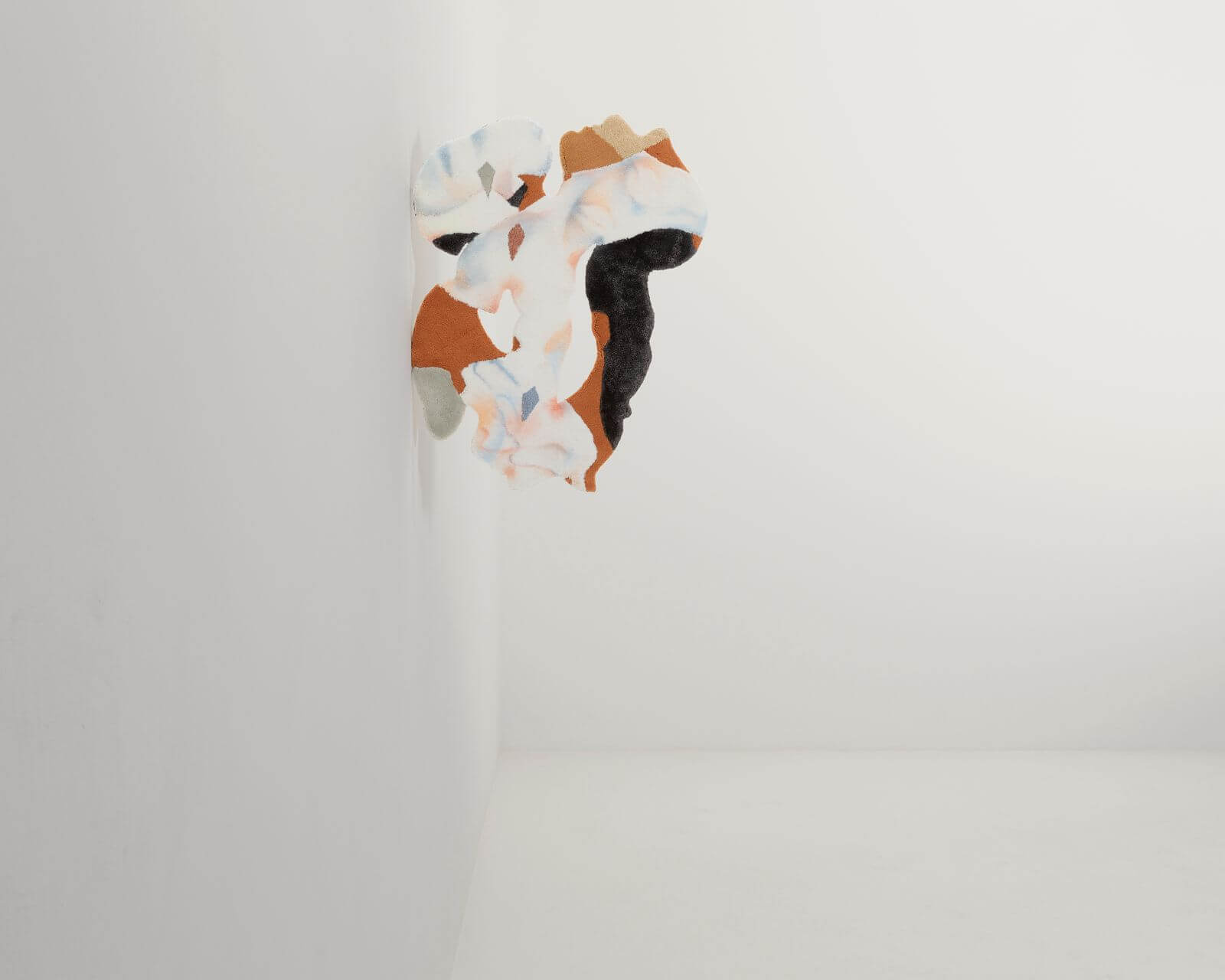
Bea Bonafini, ‘Tomb of the Bullesses’, 2018
COURTESY: Bea Bonafini & Carpenters Workshop Gallery
TDE: Since then how have your explorations evolved?
Bea Bonafini: One big shift was figuring out how to be independent of machines in creating textile works on a large scale, by using industrial or found material. I started making tapestries that were straddling different worlds – enveloping installations that were almost like horizontal textile paintings that people walked on with their shoes off. I was trying to understand how a pictorial space of a painting, with its narrative elements and its figurative elements, could become all-embracing, could give you that sense of comfort so you would want to spend time with the work, rather than confront it at a distance. So that you almost sank into it.
All of us have a relationship with soft and hard materials but there is something very intimate about soft materials, we clothe ourselves in them, and go to sleep with them. There is something really comforting about softness, it is disarming.
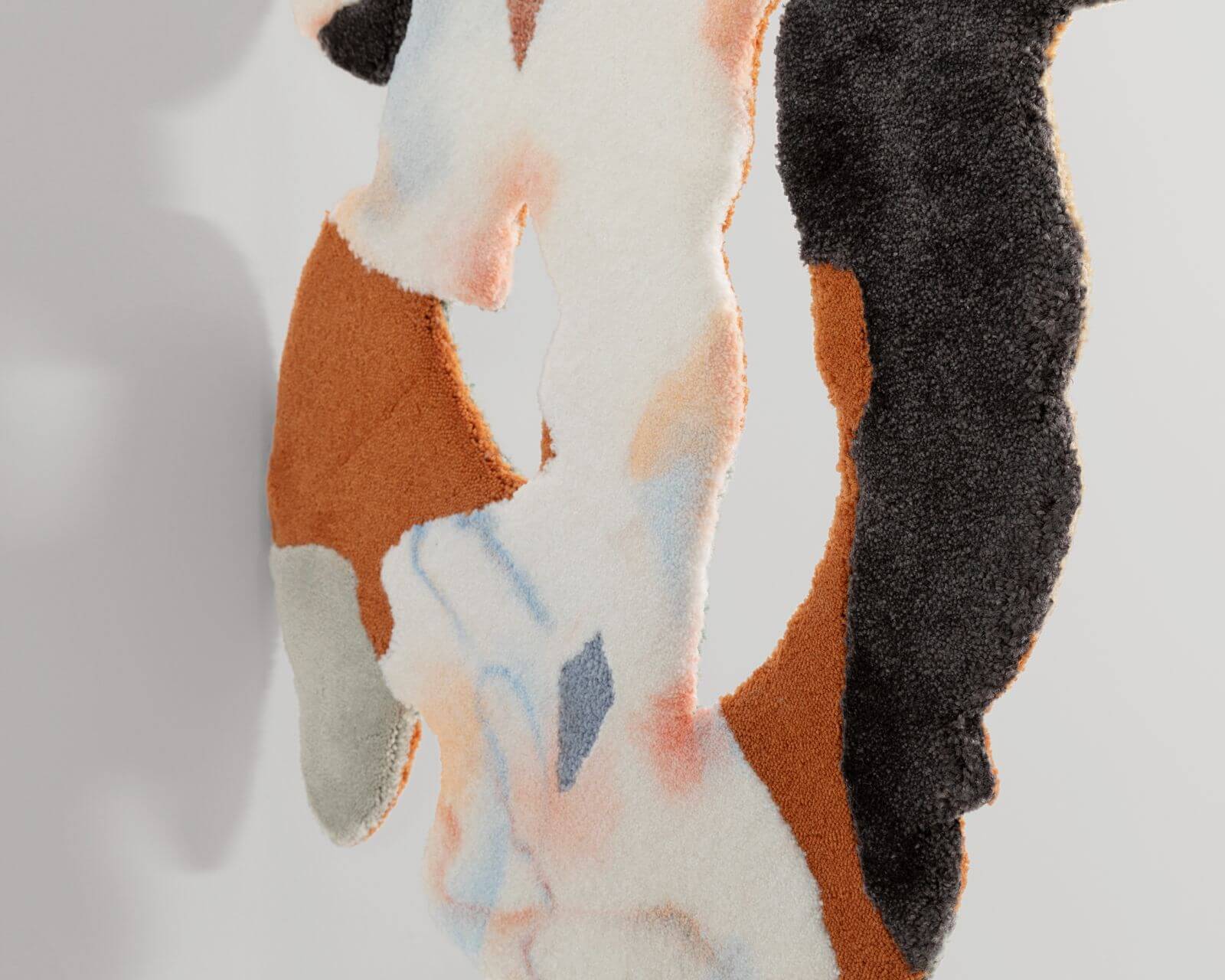
Bea Bonafini, ‘Tomb of the Bullesses’, 2018 (detail)
COURTESY: Bea Bonafini & Carpenters Workshop Gallery
And then the food aspect took a parallel course. Once or twice a year I would create a banquet performance. Thinking of vulnerability and intimacy I used food as this kind of crux that would help people soften up, but also put them on edge: so, making people eat with strangers or feed each other. The interactions were very participatory, but also extremely playful, and I loved collaborating with chefs, musicians and people who perhaps would be waiters but would also be performers at the same time. This was a really important thing for me because it brought the community together in a more holistic way.
TDE: How did your collaboration with Carpenters Workshop Gallery develop?
Bea Bonafini: I was in Paris and I was very lucky to find a spot in a new studio complex run by Poush, an organisation that takes over disused or condemned buildings, which they fill with artists. So we were 170 artists, designers and architects in this one big ex-office building, just on the north edge of Paris, curated by Yvannoé Kruger [Manifesta’s artistic director]. He would organise a lot of studio visits, and so these spontaneous encounters would happen, such as with Carpenters Workshop Gallery.
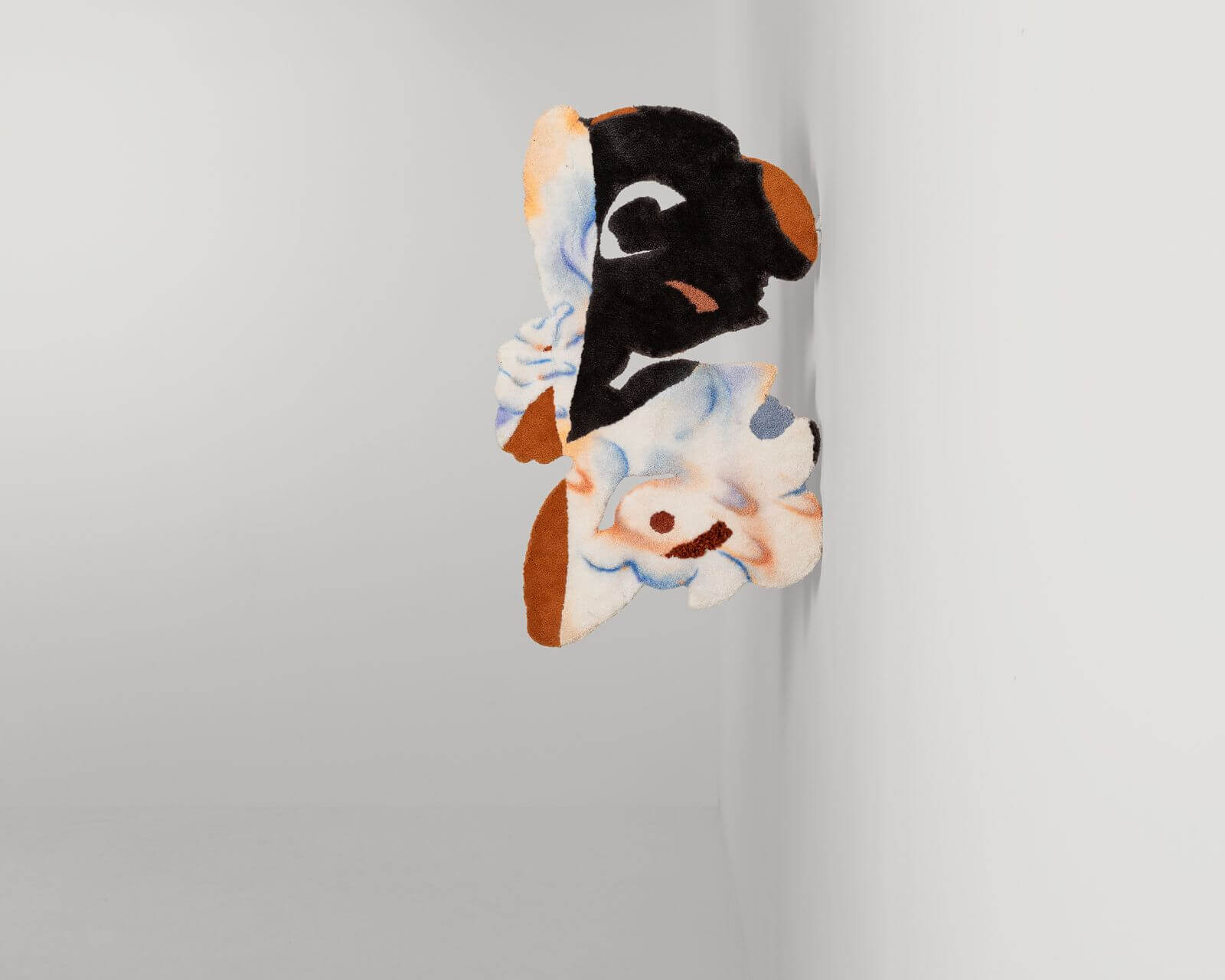
Bea Bonafini, ‘Tomb of the Bulls’, 2018
COURTESY: Bea Bonafini & Carpenters Workshop Gallery
I was making large-scale tapestry carpets, working from the back of domestic carpets, which I cut into pieces, using an inlay technique. I cut each form twice and replaced them and did that again and again, so there is a repetitive cutting and splicing, until a patchwork begins to emerge. It was actually a very difficult time for me because my Dad was very ill in Italy and it was hard to visit him because of Covid restrictions. So I was making work that was reflecting a period of anticipating loss. I was thinking of the way the subconscious creates monsters and how we have to deal with those monsters, tame them. But I was also thinking about the big trauma we are living through now of species becoming extinct and so this sense of collective loss in relation to other animals that we will never see again and who will become mythical. So I fictionalised these deep-sea mammal-fish monsters and I called them ‘Face of the Deep’.
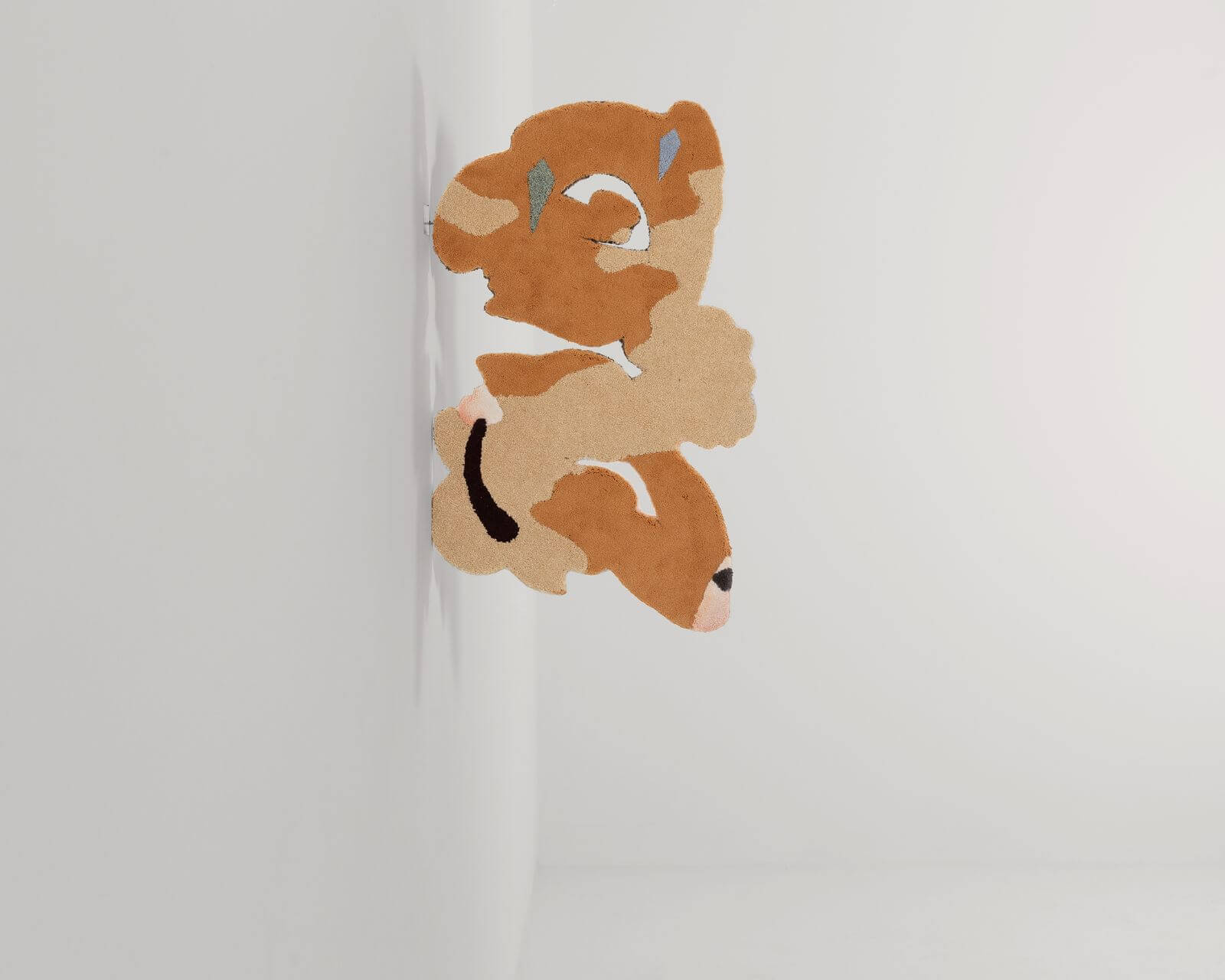
Bea Bonafini, ‘Tomb of the Bulls’, 2018
COURTESY: Bea Bonafini & Carpenters Workshop Gallery
TDE: What are you showing in ‘The New Guard: Paris’ ?
Bea Bonafini: I am showing two works that are between tapestries and sculptures, because they are double-sided, with an interior of wood, and stand out from the wall at ninety degrees. So they have a solidity to them but they are fundamentally soft and are painted and stained with soft pastels. These are called ‘Tomb of the Bulls’ and ‘Tomb of the Bullesses’ and they refer to one of my first big inspirations when I started making tapestries, which are Etruscan tomb paintings. Those artists often worked with silhouettes and profiles, and with the technique of the inlays, I have to work with profiles too – that is how I make my figures emerge.
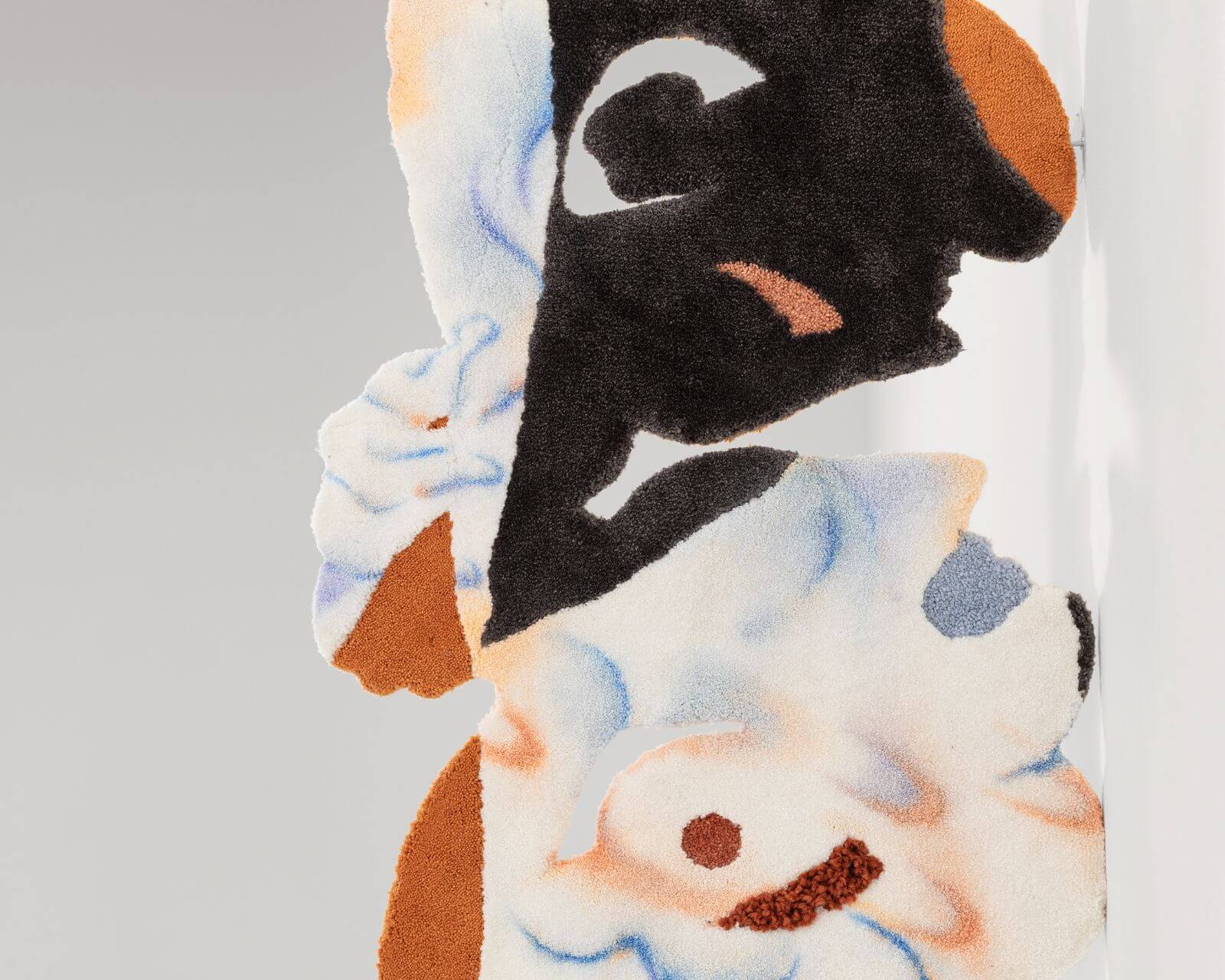
Bea Bonafini, ‘Tomb of the Bulls’, 2018 (detail)
COURTESY: Bea Bonafini & Carpenters Workshop Gallery
There was something so lively and playful about the way the Etruscans used the bodies and the mystery they are shrouded in, and the fact that they are made by anonymous painters and that you have to go underground to see them. There is also a lot of fluidity between animals and humans in these funerary artworks, which is reflected in my tapestries also.
The third work, ‘4’, is based on the numeral created by the crossing of the legs of the figure on the tarot card of the hanged man. I work on multiple levels with my tapestries, so depending upon what level of the composition you tune in to, there is a superimposition of images. In the background of this work, if you look closely, you will see that there are two crossed legs that make the figure four, and over the top of this there are two figures who are facing each other.
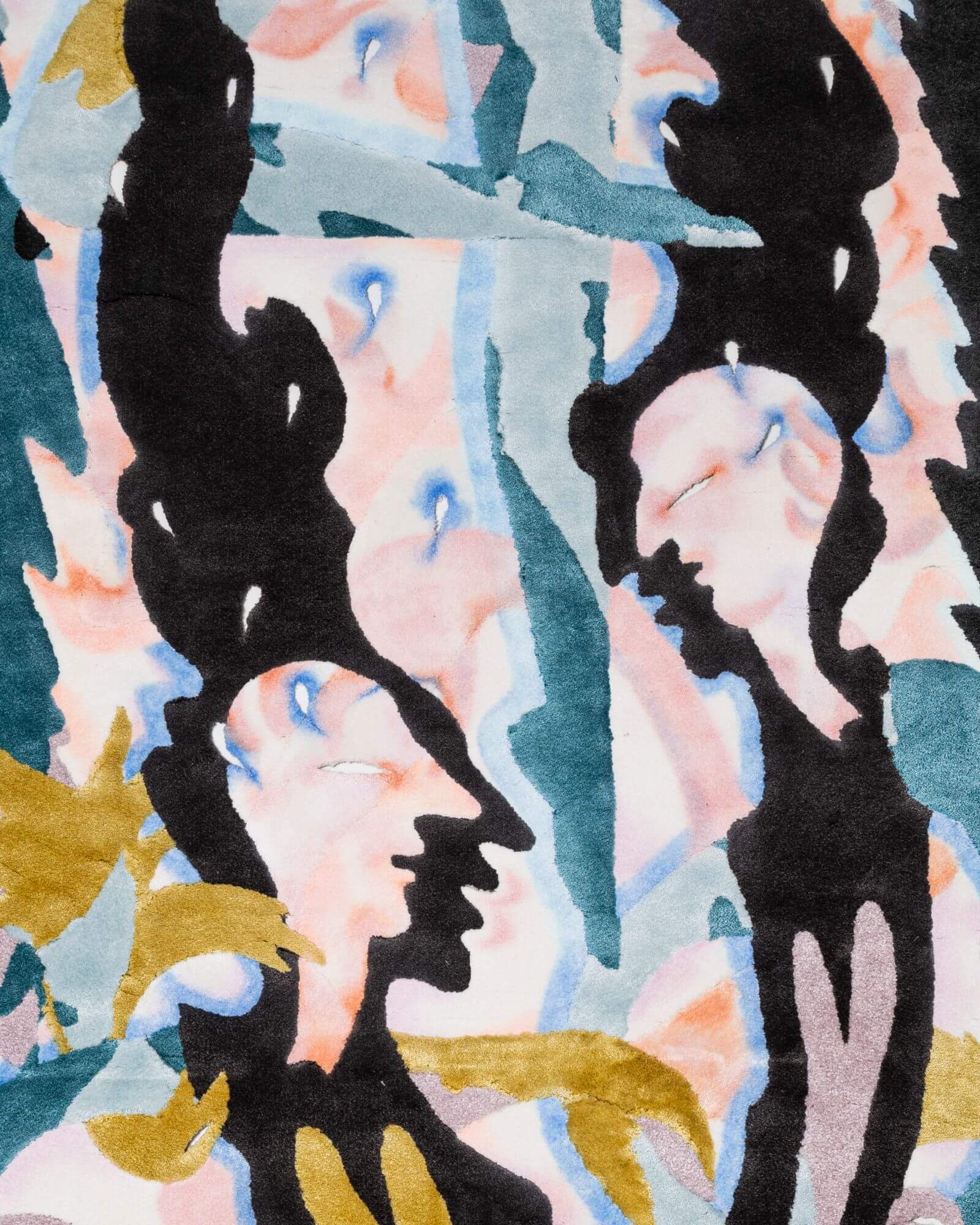
Bea Bonafini, ‘4’, 2019 (detail)
COURTESY: Bea Bonafini & Carpenters Workshop Gallery
The figure of the hanged man usually represents the shift in perspective, turning things around, and even though it is an ominous card, it is really not about that, it is about reinvention through the shift in perspective. That is also what the material does, because it goes from being something with a horizontal surface to a vertical surface, from something that could be domestic to something of the fine arts – so elevating it to this other realm.
NEXTGEN | THE NEW GUARD at Carpenters Workshop Gallery in Paris runs until 3rd September 2022.




